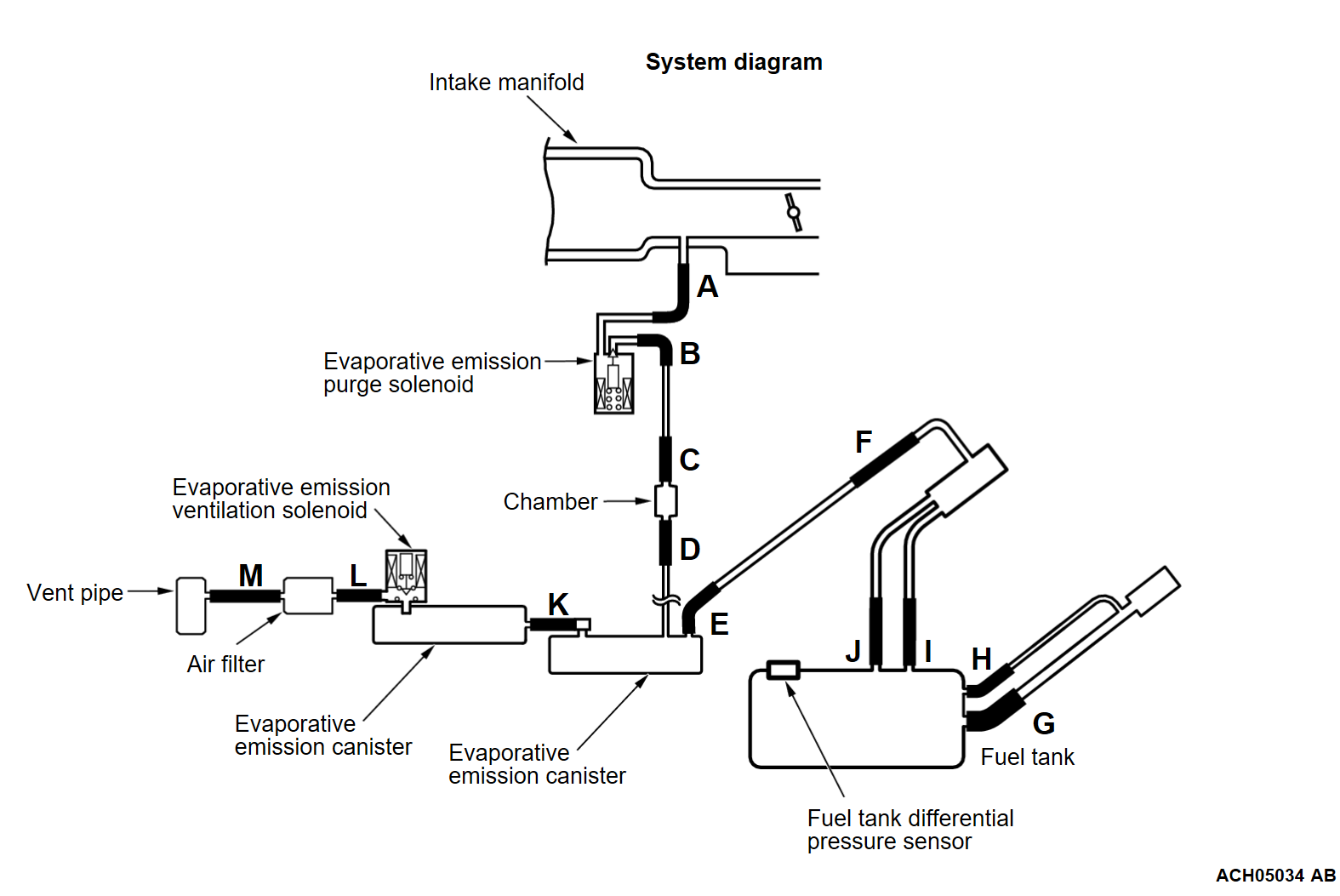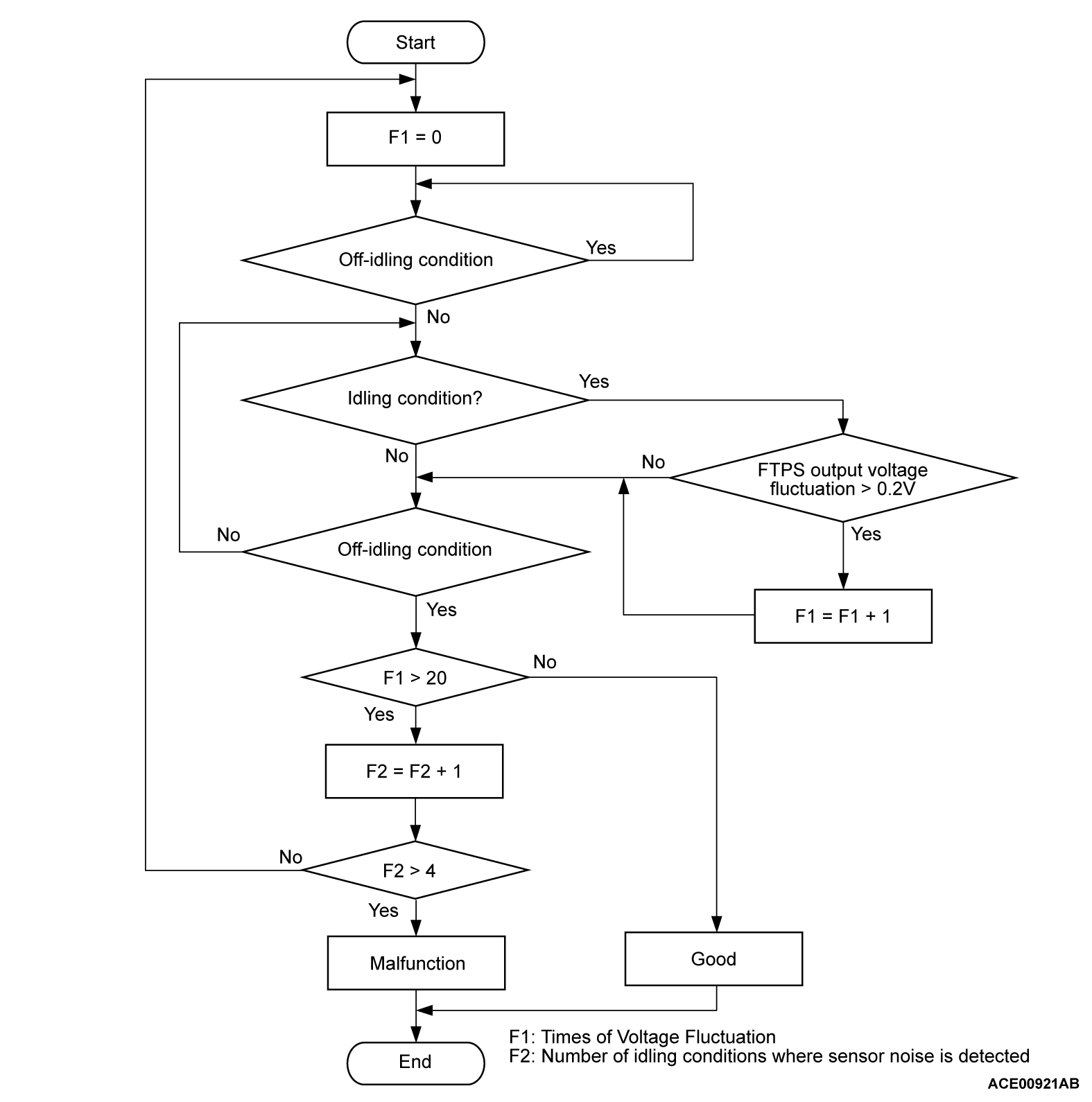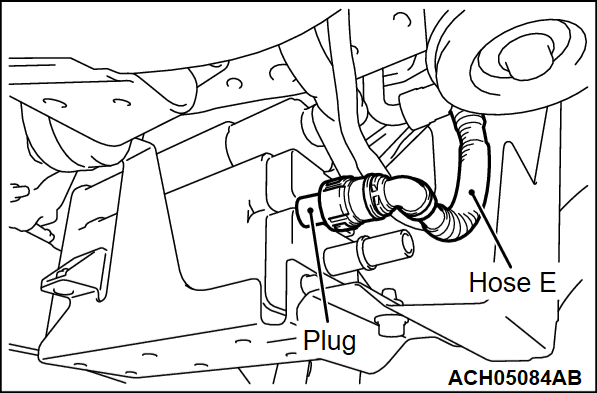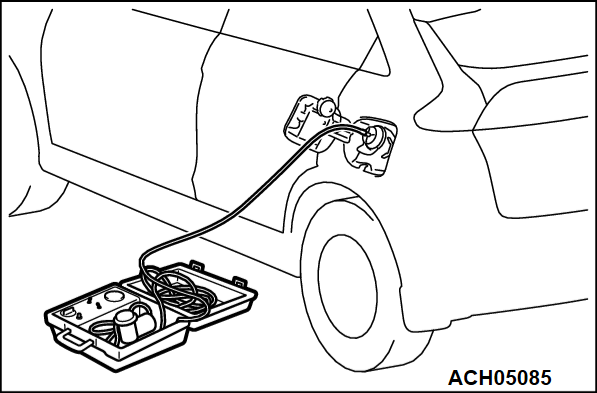DTC P0451: Evaporative Emission Control System Pressure Sensor Range/Performance
CIRCUIT OPERATION
- The ECM terminal FPR5 supplies a 5 volts reference signal to the fuel tank differential pressure sensor. The fuel tank differential pressure sensor is grounded through the ECM terminal FPRE.
- The fuel tank differential pressure sensor returns a voltage signal to the ECM terminal F/PR that is proportional to the pressure in the fuel tank.
TECHNICAL DESCRIPTION
- The ECM monitors the fuel tank differential pressure sensor signal voltage.
- The ECM determines whether the fuel tank differential pressure sensor signal voltage is within normal operating parameters.
DESCRIPTIONS OF MONITOR METHODS
Detect malfunction if change of fuel tank differential pressure sensor output voltage during idling stays large during specified go/stop operations.
MONITOR EXECUTION
- Continuous
MONITOR EXECUTION CONDITIONS (Other monitor and Sensor)
Other Monitor (There is no temporary DTC set in memory for the item monitored below)
- Evaporative emission purge solenoid monitor
- Evaporative emission ventilation solenoid monitor
- Fuel tank temperature sensor monitor
- Fuel level sensor monitor
Sensor (The sensors below are determined to be normal)
- Mass airflow sensor
- Barometric pressure sensor
- Intake air temperature sensor 1
- Engine coolant temperature sensor
- Accelerator pedal position sensor
Check Conditions
- Accelerator pedal is not depressed.
- Vehicle speed is 1.5 km/h (1 mph) or less.
| note | The conditions for deviating from idling operation are as follows:
|
Judgment Criteria
- The drastic pressure fluctuation is detected 20 times or more per engine idling, which is that the fuel tank differential pressure sensor output voltage is 0.2 V or more.
- The condition described above is consecutively detected 4 times under the normal driving conditions
| note | If the number of sudden pressure fluctuations does not reach twenty during any one period of engine idling, or if the ignition switch is turned OFF, the counter will reset to zero. |
FAIL-SAFE AND BACKUP FUNCTION
- None.
TROUBLESHOOTING HINTS (The most likely causes for this code to be set are:)
- Fuel tank differential pressure sensor failed.
- Fuel tank differential pressure sensor circuit, harness damage or connector damage.
- ECM failed.
DIAGNOSIS
STEP 1. Using scan tool (M.U.T.-IIISE), check data list item 52: Fuel Tank Differential Pressure Sensor.
| caution | To prevent damage to scan tool (M.U.T.-IIISE), always turn the ignition switch to the "LOCK" (OFF) position before connecting or disconnecting scan tool (M.U.T.-IIISE). |
(2) Disconnect the hose E from the evaporative emission canister.
(3) Plug the disconnected end of hose E.
(4) Turn the ignition switch to the "ON" position.
(5) Remove the fuel cap.
(6) Set scan tool (M.U.T.-IIISE) to the data reading mode for item 52, Fuel Tank Differential Pressure Sensor.
- Output voltage should be between 1,500 to 3,500 millivolts.
(7) Connect the evaporative emission system pressure pump (Miller number 6872A) to the fuel tank filler tube by using fuel tank adapter (MLR-8382) and pressurize the fuel tank.
- The fuel tank pressure reading should increase.
(8) Turn the ignition switch to the "LOCK" (OFF) position.
(9) Remove the evaporative emission system pressure pump (Miller number 6872A) and the fuel tank adapter (MLR-8382), and reinstall the fuel cap.
(10) Connect hose E to the evaporative emission canister.
Is the sensor operating properly?
STEP 2. Measure the sensor supply voltage at fuel tank differential pressure sensor harness side connector.
(1) Disconnect the fuel tank differential pressure sensor connector and measure at the harness side.
(2) Turn the ignition switch to the "ON" position.
(3) Measure the voltage between terminal FPR5 line and ground.
- Voltage should be between 4.9 and 5.1 volts.
(4) Turn the ignition switch to the "LOCK" (OFF) position.
Is the measured voltage between 4.9 and 5.1 volts?
STEP 3. Check of harness damage in FPR5 line between fuel tank differential pressure sensor connector and ECM connector.
STEP 4. Check the continuity at fuel tank differential pressure sensor harness side connector.
(1) Disconnect the fuel tank differential pressure sensor connector and measure at the harness side.
(2) Check for the continuity between terminal FPRE line and ground.
- Continuity (2 ohms or less).
Does continuity exist?
STEP 5. Check of harness damage in FPRE line between fuel tank differential pressure sensor connector and ECM connector.
STEP 6. Check of harness damage in F/PR line between fuel tank differential pressure sensor connector and ECM connector.
STEP 7. Replace the fuel tank differential pressure sensor.
(1) Replace the fuel tank differential pressure sensor.
(2) Carry out test drive with the drive cycle pattern. Refer to Diagnostic Function. OBD-II Drive Cycle - Pattern 17  .
.
 .
.(3) Check the diagnostic trouble code (DTC).
Is DTC P0450 set?
 The inspection is complete.
The inspection is complete.![[Previous]](../../../buttons/fprev.png)
![[Next]](../../../buttons/fnext.png)




